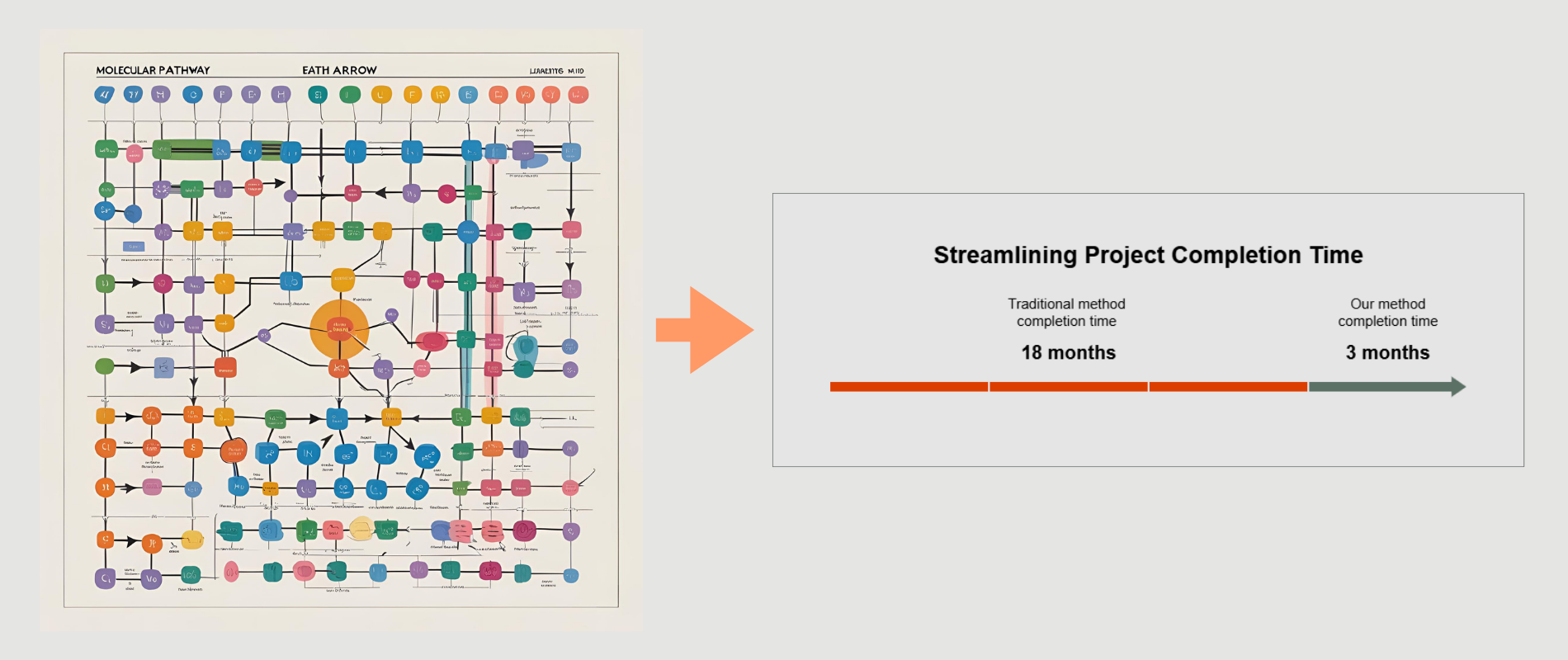Simplifying Scientific Communication: How to Translate Your Science Into Messages That Actually Work
Who it’s for: Business development leads, marketing managers and founders at biotech companies who struggle to explain the science without losing their audience.
What you’ll learn: This post helps you bridge the gap between scientific brilliance and real-world understanding. Learn a proven three-layer messaging approach that helps you speak clearly without dumbing things down. It’s about saying the right things to the right people at the right time.
You've got breakthrough science. Your team is brilliant. Your data is solid. So why does everyone look confused when you explain what you do?
If you're a BD lead or marketing manager at a biotech company, you've probably sat through countless meetings where your brilliant scientists explain their work to investors, partners, or customers, only to watch eyes glaze over by slide three.
Here's the thing: Your science isn't the problem. Your messaging is.
The Real Challenge: Everyone Needs Different Information
When your CEO asks you to "just make it simpler," they're not wrong, but they're not being specific enough. The real issue isn't that your message is too complex. It's that you're trying to use the same message for everyone.
Your investors don't need to understand your protein folding mechanism. They need to understand your market opportunity.
Your pharma partners don't care about your latest Nature paper. They care about how you'll help them move faster and cheaper.
Your hospital procurement team doesn't want a biochemistry lecture. They want to know if your solution will save them time and money.
Different audiences need different information, but they all need to understand why you matter.
Stop Overthinking It: The Three-Layer Approach
Instead of creating one "perfect" message that tries to serve everyone, build three layers:
Layer 1: The Hook (10 seconds)
This is your headline, your LinkedIn summary, your elevator pitch opener. It should answer: "What do you do and why should I care?"
Bad: "We leverage advanced machine learning algorithms to optimize antibody discovery workflows through proprietary computational methods."
Better: "We help biotech companies find the right antibodies 5x faster than traditional methods."
Layer 2: The Bridge (30 seconds)
This connects your hook to your credibility. Name your technology, mention your target market, hint at your proof points.
Example: "Our AI platform analyzes millions of antibody sequences to predict which ones will work best for specific targets. We've already helped three biotech companies reduce their discovery timelines from 18 months to 3 months."
Layer 3: The Deep Dive (Everything else)
This is where your whitepapers, case studies, technical blogs, and detailed presentations live. Most people won't get here and that's okay.
What Each Audience Actually Wants to Hear
Let's get specific about what matters to your key stakeholders.
Investors Want:
Market size and opportunity
Proof of traction (customers, partnerships, revenue)
Competitive advantage that's defensible
Team credibility and track record
Customers/Partners Want:
How you'll make their development faster or cheaper
Validation data from real studies
Scalability and reliability
Regulatory pathway clarity
Procurement Teams Want:
ROI and cost savings
Implementation timeline
Support and training requirements
Integration with existing systems
Internal Teams Want:
Clear value proposition they can explain
Competitive positioning
Customer success stories
Technical validation
The Visual Translation Rule
Here's something most biotech companies get wrong: Your visuals should clarify, not impress.
Stop creating complex diagrams that showcase how smart you are. Start creating simple diagrams that show how your solution works and why it matters.
Instead of: A detailed molecular pathway diagram with 47 arrows and 12 different colors
Try: A simple before/after comparison showing "Traditional method: 18 months" vs "Our method: 3 months"
Instead of: A complex workflow chart with every possible step
Try: A three-step process showing "Input → Our Platform → Output"
The Three Words That Kill Your Message
"Innovative" - Everyone says this. Show, don't tell.
"Revolutionary" - Unless you're literally changing everything, you're not.
"Proprietary" - This means nothing to customers. They care about results.
Instead, use specific, measurable language:
"5x faster discovery"
"50% reduction in failed experiments"
"Validated in 3 clinical trials"
Test Before You Launch
Before you publish that homepage, send that pitch deck, or launch that campaign, do this:
The Colleague Test: Ask someone outside your department to read your message and explain what you do. If they can't, rewrite it.
The Stakeholder Test: Show your messaging to actual customers, investors, or partners. Ask: "Does this address your main concern about working with us?"
The Attention Test: Track where people stop reading/scrolling. If it's before your value proposition, you buried the lead.
Your Message Should Get Stronger, Not Longer
Here's the counterintuitive truth: The more complex your science is, the simpler your initial message needs to be.
Your breakthrough discovery deserves to be understood. Your innovative platform deserves to find the right partners. Your brilliant team deserves to have their work make an impact.
But none of that happens if people can't quickly understand what you do and why it matters to them.
Start with clarity. Build trust through simplicity. Then deliver the technical depth when they're ready for it.
Your science is already changing the world. Now make sure your message can too.
References:
Hutchins JA. TAILORING SCIENTIFIC COMMUNICATIONS FOR AUDIENCE AND RESEARCH NARRATIVE. Curr Protoc Essent Lab Tech. 2020 Jun;20(1):e40. Doi: 10.1002/cpet.40. Epub 2020 Jan 24. PMID: 33072243; PMCID: PMC7566313.
If you want to learn more about life science digital marketing strategies, you can browse our biotechnology content marketing resources



